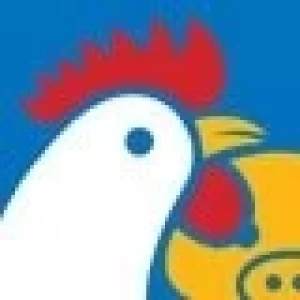Common Strategies<br>ARGENTINEAN MEAT

To most people, there is only one kind of Argentine meat – beef.Yet statistics show that this flagship of Argentine foreign trade is getting competition, from its very own backyard.In recent years both pork and poultry production is on the rise, with impressive sales figures to show for themselves during the last couple of years, where export of Argentine pork products reached 80.594 tons in 2003. In the poultry sector things are going equally smooth – according to the latest figures, export of poultry products increased around 60 % during the first 6 months of 2004, compared with the year before.However, despite these astounding successes, producers complain that not enough resources are allocated to the white meat sector, compared to the red meats, and would like to see more action from the public sector. At the same time, the beef producers also think that more value could be gotten out of the resources offered to the market.If anything this is a golden opportunity for producers to consolidate the tremendous successes of Argentine meats.While it is true that it is the principal responsibility of the public food safety authorities to prevent, control and eradicate animal disease as well as protect public health, it is also true that the public sector alone can only do so much. In other words, there is room for more action from the producers themselves.We all know that each under his flag, have already done an impressive job to combat to eradicate Foot and Mouth Disease, Classical Swine Fever, and Newcastle Disease, implemented quality control programs, gained a foothold in the international food export market, just to mention a few of many successes.Yet, in spite of this, there is a road still to explore and that is the one of joining forces to grow, stronger together.Many a reader will certainly frown at this. How is it possible to grow – individually – if you cooperate with your competitor?Certainly, one would argue, the amount of meat each person eats tend to be stable, while what type of meat this is can be manipulated, just like fashion. Now, if you are a cattle producer you are probably not going to be very happy to see a shift in consumer patterns that perhaps would benefit pork consumption at your cost. Quite naturally, one would expect a rather luke-warm, if not cold, attitude to a prospective pork producer looking to make business in your back yard. And likewise, a pork producer might not be easily persuaded that cooperating with a poultry producer would be the smartest thing for his own business.But this is only true if you trade in commodities, products with no particular value.The prevailing tendency, however, is more ever more specialized products, with huge investments in quality management, safety and health, so experience across the world has shown the benefit of close cooperation in some key aspects of animal production, while still competing fiercely with each other for the consumers taste-buds.NEW CONTEXTAnimal health is not a static universe. With more international trade, moving stock from one hemisphere to another, and indeed more travelers who might bring bad bugs with them, one cannot stress this fact too much.Most of the recurring outbreaks of infectious animal disease around the world are a result of too many vectors (* vectors are persons or objects, for instance cars, insects, etc, that may transport an infective agent across a distance, without necessarily expressing symptoms of disease themselves - if the vector is a person or another animal species) moving around with little or no control, with potential disastrous results, such as those seen in relation to the latest outbreaks of Avian Influenza.The costs of global outbreaks of infectious animal disease are enormous, and on a human scale, the effects of an infectious animal disease may be disastrous.But it is not only animal health that may pose a threat to a market.With more competition comes more pressure from the market. Consumers are no longer satisfied to buy cheap products only. They want to know about production methods, impact on the environment, product safety, and he who wants to be on the market has got to be able to show that he takes consumer concerns about animal health and welfare, food safety and quality seriously. Because no-one should be fooled about the recent break through in the WTO negotiations regarding reducing tariffs and believe that trade will be a lot easier now. The EU just issued a statement where it said that the measures would only come into effect in 10 years time, due to unilateral measures adopted by the block in recent years.This should be read as following: the word subsidies has been substituted by the word compensation - for implementing and complying with animal health and welfare plans, environmental protection plans, etc, so although tariffs may be slightly lower, it is not very likely that individual nations will risk the wrath of its citizens and let products of a (perceived) lesser quality, flood its markets.If nothing else, a number of well respected consumer lobbying groups will make sure that the consumer will be well informed about foreign food production. Certainly poultry producers delivering to Kentucky Fried Chicken suffered a rude awakening a few weeks back when a US based animal welfare group released video footages to international media that showed the cruelty of slaughterhouse staff as they were stomping the animals on the ground and smashing them against the walls. Such tactics are likely to become more common as competition grows, and these are the new realities that Argentine meat producers must react to.So, returning to the start of the page, protecting animal health is a prime responsibility of the public food safety authorities, it is also necessary that the food producers follow suit and develop strategies that protect the integrity of the Argentine brand.The easiest way to achieve this is if cattle producers, pork producers and poultry producers sit down together and discover their common interests and build AND implement strategies that allow them to define a common minimal standard in animal health and welfare policies, while competing fiercely with each other in other areas, in order to gain the right to satisfy the consumers’ taste-buds – here in Argentina, as well as around the world.* Hanne Martine Stabursvik, Norwegian veterinary surgeon working and living in Argentina. Member of the Royal College of Veterinary Surgeons, UK. One of her specialties is the veterinary checks on imported products of animal origin in the EU. She teaches animal welfare at the Universidad del Salvador,Facultad de Medicina Veterinaria and works with specialists in the field from all over the world. She is also a member of the Red Alimentaria.




